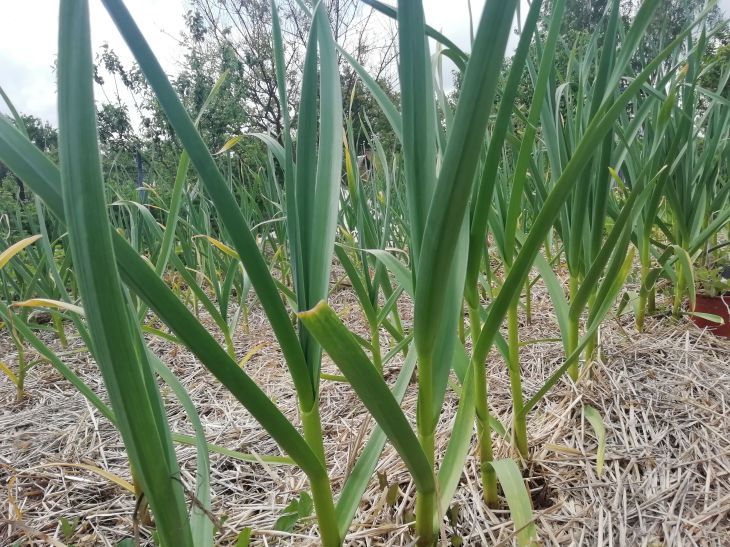Why do garlic leaves turn yellow and how to prevent this so as not to lose the harvest
Garlic tops turn yellow for many reasons, but this can be prevented.
Frosts
Failure to observe the timing of planting garlic in the fall may subsequently cause yellowing of the leaves in the spring.
Planting garlic early in very warm weather can cause vigorous growth, resulting in leaves that freeze in the winter and weak, yellow growth in the spring, if any.
To protect future harvests, mulch your garlic plot.
To do this, take fallen leaves, rotted humus, corn flour, etc. Also use biological growth stimulants in the spring to relieve stress and help recover quickly.

Experts recommend treating garlic with preparations such as "Energen", "Epin", "Zircon", which should be prepared according to the instructions.
Lack or excess of moisture
Garlic leaves may turn yellow in very hot or rainy weather.
Violation of the optimal air-water balance for plants, and they react to this by yellowing of the leaves.
When the spring weather is moderate with occasional rainfall and warm average daily temperatures, water your garlic once every 14 days. Increase watering in hot and dry weather. No need to water at all in a rainy spring.
If there is a thick layer of mulch on the garlic bed, it is also not watered. Garlic reacts much more negatively to excess water than to drought. Before harvesting, approximately 30 days before, stop any watering of the garlic beds.
Pests and diseases
Garlic suffers from downy mildew, rot, rust, mold, and is damaged by onion flies, nematodes, moths, and mites. Disease or damage by garlic pests can also cause yellowing of the leaves.
Dig up the yellowed garlic bush and check for damage. For prevention, treat with fungicidal and insecticidal preparations.
To prevent garlic damage:
• plant garlic in one bed once every few years;
• treat with fungicides before planting in the ground;
• update the garlic variety every 3-4 years;
• Grow marigolds next to your garlic bed.
Lack of nitrogen and other microelements
In the absence of the previous reasons, garlic still turns yellow, there may be insufficient nutrition, especially a lack of nitrogen and microelements.
In spring, when there is still snow, fertilize the garlic plantings. To do this, dilute 6 grams of ammonium nitrate, 10 grams of superphosphate and 6 grams of potassium sulfate in ten liters of water. The watering rate is 10 liters per 1 square meter, repeat after 30 days.
For organic gardeners, feed your garlic bed with an infusion of herbs and wood ash.
When yellowness does appear, treat the garlic with a complex fertilizer, and after 7 days, apply root fertilization. But when the garlic leaves begin to turn yellow from below, this means that the garlic bulb is already beginning to form and nutrients are moving from the leaves to the cloves, which are beginning to form intensively.
